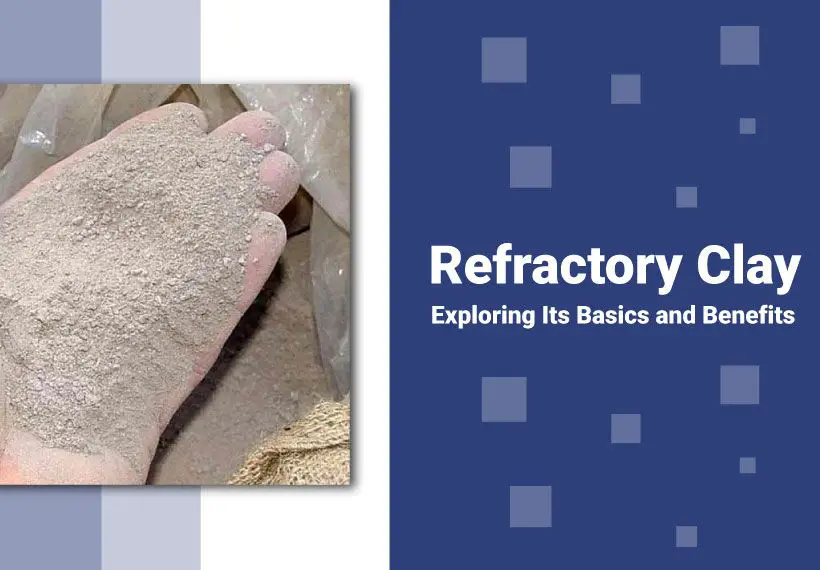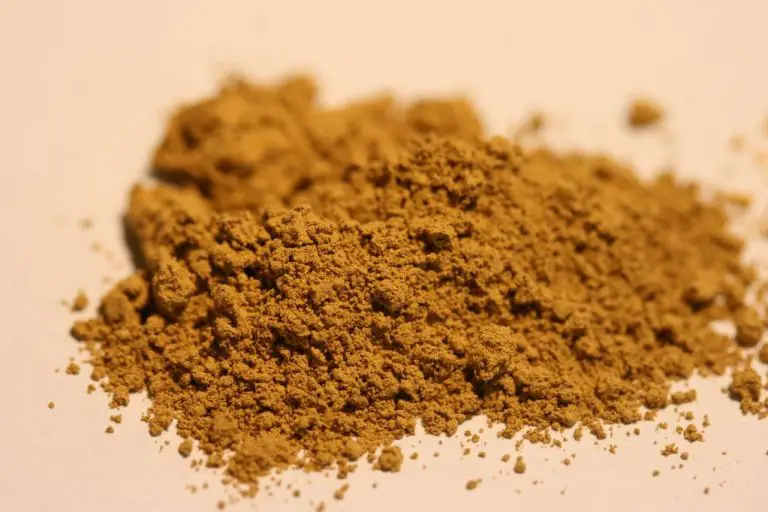A Beginner’S Guide To Different Types Of Clay
Clay is a natural earth material made up of fine-grained minerals such as kaolinite and montmorillonite. There are many different types of clays that have a wide range of uses, from creating pottery and ceramic objects, to industrial applications.
This beginner’s guide will provide an overview of the most common types of clay used in arts, crafts, and manufacturing. We’ll explore the characteristics and uses of clays like earthenware, stoneware, porcelain, fire clay, ball clay, bentonite, and kaolin.
The purpose of this guide is to help readers understand the differences between clays and make informed choices when selecting clay for their specific project or purpose. Whether you want to make pottery at home, or are researching clays for industrial applications, this guide aims to provide the key information you need to get started.
With a better understanding of clay types and properties, both hobbyists and professionals can confidently approach working with this versatile material.
Earthenware Clay
Earthenware clay is composed mainly from secondary clay, or lower grade clay that has a higher content of organic matter and iron oxide than higher grade clays like stoneware or porcelain [1]. Due to its higher iron content, earthenware clays have a firing range of lower temperatures around 1000-1200°C. These temperatures lead to less vitrified clay that is porous with a rougher surface texture. When fired, earthenware clay produces pieces with a terracotta red-orange to brick color.
The higher porosity and lower vitrification of earthenware clay makes it less watertight and durable than stoneware or porcelain. However, its open pores can create interesting artistic effects with colored glazes. Earthenware clays are commonly used for pottery, ceramic sculptures, and decorative pieces that don’t require watertightness. The open texture allows earthenware to absorb slips and glazes differently from smooth clays. Earthenware has been used across many early cultures for functional pottery and vessels because it can be fired at lower temperatures.
[1] https://seattlepotterysupply.com/pages/the-types-of-pottery-clay-and-what-they-are-used-for
Stoneware Clay
Stoneware is a dense, hard clay that is non-porous when vitrified and fires at high temperatures typically between 2,200°F and 2,400°F 1. It is considered an intermediate clay between earthenware and porcelain. Stoneware clay is composed of non-swelling clay minerals like kaolinite, feldspar, silica, and other inclusions that provide its excellent workability 2.
The properties of stoneware clay make it ideal for tableware and pottery. It has a dense, non-porous body when fired that is more durable and impact resistant than earthenware. The high firing temperature allows stoneware to become vitrified, resulting in a water-tight material that is functional and food-safe. Typical uses for stoneware clays include mugs, dishes, bowls, vases, and other decorative or functional pottery.
Porcelain
Porcelain is a type of ceramic made by heating materials like kaolin, quartz, and feldspar to very high temperatures of over 2,300°F (1,260°C). It is composed of very fine clay that results in a dense, hard, and non-porous material when fired.
Porcelain is highly vitrified, meaning much of the water has been removed during the firing process. This makes porcelain less prone to moisture absorption and gives it a characteristically glass-like, translucent appearance.
Due to its hardness and low porosity, porcelain is an incredibly durable and long-lasting ceramic material. It has excellent resistance to chipping, cracking, staining, and thermal shock. Its smooth surface helps reduce adhesion and buildup of bacteria as well.
Some of the most common uses of porcelain include pottery, tableware, sanitary ware, electrical insulators, dental restorations, and decorative sculptures or figurines. Many recognize it from fine china dinnerware or delicate decorative pieces.
Overall, porcelain is prized for its strength, translucency, whiteness, hardness, and high resistance to chemical attack and deterioration. It is considered a high-quality ceramic ideal for objects that require excellent mechanical performance and long-term stability.
Ball Clay
Ball clay is a kaolinitic clay that contains high levels of kaolinite ranging from 80-99%, with the remainder being mica, feldspar, and quartz (Imerys). It is a highly plastic, fine-grained clay that exhibits a high degree of bonding strength due to the plate-like structure of the kaolinite particles.
The key properties of ball clay that make it ideal for use in ceramics and pottery are its high plasticity and bonding ability. The plasticity allows ball clay to be easily formed and shaped. The plate-like kaolinite particles overlap and adhere tightly together, producing a strong green bonding strength that minimizes cracking and warping in drying and firing (Digitalfire).
Due to these properties, ball clay is commonly used for molding and throwing pottery and ceramic shapes. It is an essential ingredient in bodies for porcelain and whitewares. Ball clay is also used in glazes, casting slip recipes, and pressing bodies where plasticity and bonding ability are needed.
Fire Clay
Fire clay is a type of clay that can withstand very high temperatures up to 1,775°C (Wikipedia). It has the following properties:
Composition: Fire clay consists primarily of kaolinite, alumina, and silica (The Constructor). The alumina content gives fire clay its refractory properties.
High refractoriness: The high alumina content allows fire clay to be very resistant to heat. This makes it suitable for uses that involve high temperatures, such as lining furnaces and kilns.
Uses: Some common uses of fire clay include:
- Insulating bricks in furnaces and kilns
- Firebricks
- Ceramic glazes and bodies
- Refractory mortars

Common Clay
Common clay, also known as brick clay or brickmakers’ clay, is composed mainly of silica and alumina but with higher levels of impurities than other clays (Source). Its composition includes 50-70% silica, 20-30% alumina, and varying amounts of iron, magnesium, alkalis, and alkaline earths. The high impurity levels result in common clay having a coarser texture and being more plastic than kaolin or ball clay.
Due to its low purity and simple processing requirements, common clay is one of the lowest priced clays. It does not require extensive grinding or purification. The primary uses of common clay are for making bricks, cement, and ceramics that do not require high strength or low porosity. Products made from common clay must be fired at lower temperatures compared to other clays. Common clay is also a key ingredient in Portland cement manufacturing.
Bentonite
Bentonite is a type of clay composed mostly of montmorillonite and formed through the alteration of volcanic ash (Wikipedia). The montmorillonite which makes up bentonite is made up of sheet silicates which have a high surface area and excellent ability to absorb water and other molecules between the sheets (Moosavi et al. 2017).
Due to its strong absorbency, high surface area, and excellent bonding ability, bentonite has many uses. It is often used as a molding sand in the foundry industry. The clay is able to form bonds with the molding box and hold the shape of the mold as metal is poured in. Bentonite also has applications as an animal feed supplement, as drilling mud in oil and gas wells, and as a clarifying agent in liquids like wine and beer. A common consumer application is as an absorbent clumping agent in cat litter (Wikipedia).
Kaolin
Kaolin, or China Clay, is a naturally occurring white soft clay mineral (hydrous aluminium silicate) that is primarily composed of the mineral kaolinite (Kaolin | Uses, Benefits, and Safety Precautions). Due to its fine particle size and plasticity, kaolin has many unique properties and uses.
Its fine particle size allows it to fill spaces and make surfaces smoother and more uniform. This along with its malleability makes it ideal for making pottery and ceramic items like china and porcelain. It is an essential ingredient in porcelain and china manufacturing as it provides whiteness, plasticity and strength when fired. The name “kaolin” derives from the Chinese “Gaoling” meaning “high ridge” as it was originally mined in China from a region between the Kau-ling mountain range and the port of Amoy.
In addition to pottery and ceramics, kaolin has many other uses and benefits. It is utilized in the making of paper to give it gloss and whiteness. It is also used in cosmetics like facial powders and masks to soothe irritated skin (7 Benefits of Adding Kaolin Clay to Your Skin Care Routine). Overall, kaolin is an important mineral with a variety of uses ranging from pottery to paper to cosmetics.
Conclusion
This guide has provided an overview of different types of clays, their uses and characteristics. Some key takeaways include:
- There are three main categories of clays: earthenware, stoneware and porcelain. Earthenware clays are porous, soft and lower-firing. Stoneware clays are denser and higher-firing. Porcelain clays are very fine and vitreous.
- Specialty clays offer specific properties and uses. Ball clays improve plasticity. Fire clays resist high heat. Bentonite clays are very absorbent. Kaolin clays are white and fine.
- Clay bodies can consist of multiple clay types blended together to achieve the desired characteristics.
- Clays are essential materials used to make pottery, ceramics, bricks and more. The type of clay determines the final product’s qualities.
There are many resources available to learn more about working with clay. Some recommendations include taking classes at local ceramic studios, researching books and videos on clay types and techniques, connecting with pottery communities online, and experimenting with different clays yourself to understand their unique properties.




